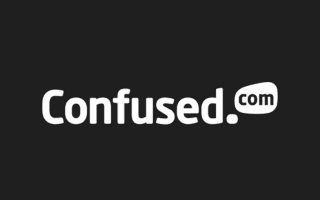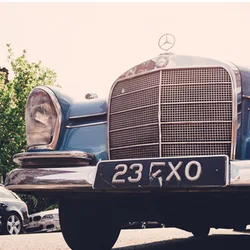
If you’re the proud owner of a rare classic car, particularly one you’ve dedicated blood, sweat, tears and (importantly) cash to restoring to pristine condition, regular car insurance may fall short of the mark in terms of how much it’s worth. Agreed value car insurance can make up the shortfall. Read on to discover how agreed value car insurance works and who it would and wouldn’t suit.
What is agreed value car insurance?
As standard, most car insurance policies base the maximum amount they’ll pay out for a claim on the car’s market value. This is equivalent to the car’s standard retail value, taking into account depreciation over time. The market value of your car is recalculated whenever you make a claim.
When you take out agreed value car insurance, you agree on the value of your vehicle with your insurer, and the car is insured for this amount. The agreed value of the car will not automatically decrease over time.
It’s most often used for classic or unusual cars where it’s harder to establish a realistic market value.
How does agreed value car insurance work?
An agreed value policy usually comes into its own if you need to replace, rather than repair, the car after an incident – if it’s written off after a crash or stolen, for example. Agreed values are usually higher than you’d receive based on the estimated market value. It means that if you’ve spent significant time and money restoring a classic car, for example, the extra value you’ve added is taken into account. The higher the agreed value of your car, the higher your premium is likely to be.
- With market value policies, the maximum amount you can claim is only calculated when you actually make a claim. It is determined by your car’s make, model, age and condition. It is not listed on your insurance certificate and you have little control over it.
- With agreed value policies, the most you can claim is the amount you agreed with your insurer when you took out or renewed the policy. This sum is listed on your insurance certificate.
Classic car values can fluctuate over time. In some cases, prices may go up as well as down. You can adjust your agreed value at policy renewal time to take account of this. Some providers, though not all, may let you make adjustments mid-term too.
What does agreed value car insurance cover?
Agreed value is usually only available with comprehensive car insurance policies. As such, it will cover all of the risks that are included as standard with comprehensive policies, including:
- Damage to your car after an accident
- Fire damage
- Severe weather damage
- Malicious acts
- Theft
- Injury to other people and damage to their vehicles and property
The key difference in cover is that you agree up-front what your car is worth, rather than it being dictated by external factors.
Example: Up in flames

John had spent nearly 15 years restoring a classic Mercedes-Benz 600, which he kept parked in an exterior shed of his property. John had the car insured under agreed value cover for £90,000.
Late one evening, John awoke to see the garage up in flames from his bedroom window. By the time local firefighters had arrived, all that was left of the garage and car were mounds of ash and scrap metal.
The insurance company declared the vehicle to be a total loss. John is paid the agreed value of £90,000. If he’d had a car insurance policy based on market value, the pay-out would have likely been much lower.
* This is a fictional, but realistic, example.
Are there any exclusions for agreed value car insurance?
All of the usual car insurance terms and conditions, and exclusions, also apply to agreed value car insurance. Just because you’ve paid for a higher agreed value doesn’t mean you’ll necessarily be able to claim it. For example, you won’t be able to claim if you’re found to be using your car for purposes that you didn’t include in your policy – such as renting out your classic car for weddings if you don’t have business cover. And you won’t be able to claim for wear and tear, or driving under the influence.
Some additional pitfalls you may encounter with agreed value insurance include:
- Sub-limits: These are limitations on the amount of coverage for certain items in the policy. For example, your policy might specify a maximum of £500 for broken glass claims and £1,000 total for all modifications. Whether or not you opt for an agreed value policy, the sub-limits will still restrict the amount you can claim.
- Maximum values: Agreed values will typically be based on the likely sale price of the car, often following an expert valuation. They may not always cover the full cost of money you’ve pumped into the car – for professional restoration, for example. For this, you’ll need to ensure your policy offers “reinstatement cover”, which lets you declare the sum you wish to cover.
What are the different types of agreed value car insurance?
- Standard agreed value cover is based on how much your car would be likely to sell for. Insurers often require a professional valuation, from a car club for example. If you’ve paid more for restoration than the car is deemed likely to sell for, you may not recoup your full investment.
- Reinstatement cover lets you specify how much you want to insure the car for. So if your car is written off and you want to reclaim your full outlay costs, or you want to repair it even though the cost of doing so exceeds the resale value, reinstatement cover could be the best bet.
Who are agreed value policies best for?
Agreed value insurance is mainly for rare or unusual cars, where insurers may not have accurate information on a car’s true cash value, or where a car is worth more than average compared to those of a similar age. Examples include:
- Modified cars. Aftermarket extras and modifications can raise the value of a vehicle well beyond its apparent sticker price. The easiest way to get cover for any modifications can be to calculate their value and add this into the car insurance sum insured.
- Vintage and antique cars. The market value calculation of antique cars will typically be way too low. With agreed value you can find a level of cover that more properly captures the rarity and additional value of the car.
- Luxury and high-power cars. High-end, high-powered and luxury cars, including just about any supercar, will usually be more effectively covered by agreed value. These are not typical vehicles, and depreciation won’t usually apply at normal rates.
- Cars under finance. If you still owe money on your car loan, agreed value means you can insure the outstanding loan as well as the actual vehicle. This can be invaluable in the event of a serious accident. It means you won’t end up owing more than you get paid out by a claim if your car is a write-off.
- Imported vehicles. A car that’s not normally available will not necessarily have a defined retail value. In this case agreed value would be your best bet.
What do I need to get an agreed value car insurance quote?
To get an agreed value car insurance quote, you’ll need to supply everything you need to get a regular car insurance quote, including:
- The car’s make, model and age, plus any modifications
- The car’s security
- Your estimated annual mileage
- Your age and employment
- Details of where you’ll keep the car
- Details of how you’ll use the car (social only, or for commuting and/or business)
- Your driving history, including claims and any convictions in the last few years
- Any no-claims discount
In addition, you’ll also need to provide evidence of your car’s resale value.
How do I get evidence of my car’s value?
![]()
To get agreed value car insurance based on the likely sale value of your car, you’ll need to provide the insurer with evidence of that value.
Some insurers may accept a price you provide directly, backed by evidence such as small ads for similar vehicles in a similar condition. You may also need to supply photos of the car, inside and out, plus the engine. Bills for recent restoration work you’ve had done may support the fact it’s worth more than a car of its age would otherwise be.
Alternatively, you can get a professional valuation, for example from a recognised classic car club. Some insurers require a professional valuation, and it may be more straightforward than trying to put your own value on the car. You’ll probably be charged a fee.
Are agreed value policies more expensive than market value policies?
Yes. Reasons for this include:
- Typically, you’ll be insuring your car for a higher value than would be covered by a market value policy. Higher potential pay-outs make for higher premiums.
- Agreed value policies are less common than market value policies. This means there’s less competition between insurers to drive premiums down.
As with any car insurance, there are some tactics you can use to keep costs down. These include building up a no-claims discount, keeping mileage down and parking your car in a secure location. But you’ll need to weigh up the peace of mind of having agreed value cover against whether your car is unique and atypical enough to justify the extra cost.
What affects the cost of agreed value car insurance policies?
In addition to the car’s condition and stated resale value, the specific cost of premiums depends on a range of factors, including:
- The car’s year, make and model. More common and popular cars, and those that are cheaper to repair, are generally cheaper to insure. The same is true of models with spare parts that are easily accessible, and that have a manufacturer repair network in the UK.
- Your location. Riskier areas incur higher premiums. Similarly, parking your car on the street instead of in a garage can also raise the risk levels, and therefore your premium.
- Security measures. Microdotting, car alarms, garage alarms, immobilisers and other security systems can reduce the cost of insurance.
- Modifications and extras. With agreed value car insurance, you can choose your own sum insured to include the cost of all modifications, even the ones which can’t be covered by a standard policy. For example, you probably wouldn’t select agreed value just because you have a custom paint job. However, you might want to consider it if you have suspension, engine, bodywork or other performance-affecting modifications. Remember to check the exclusions of your policy. Even with agreed value, some modifications may still be excluded.
Do I need agreed value car insurance?
If the market value of a car is easy to establish, and would cover you for the cost of a like-for-like replacement, it’s probably not worth paying extra for an agreed value policy. This is most likely to apply to:
- Standard consumer models – think the likes of Vauxhall Corsas and Ford Fiestas.
- Some very popular and widely owned classics, where there are so many on the roads that the market value should be pretty accurate.
Where can I buy agreed value car insurance?
Agreed value can be tricky to find. It is much less common than market value cover, and may not be available from many mainstream car insurance providers. However, there are a number of smaller car insurers that specialise in agreed value car insurance.
If you’re a current member of a classic car owners’ club, or a similar club for enthusiasts, it may be able to recommend a specialist policy for your model of car.
How do I claim on agreed value car insurance?
The process for claiming on agreed value insurance should be very similar to making a claim on standard car insurance. The exact details will vary slightly by insurer. Check the small print and make sure you tick all of the right boxes. These are likely to include contacting your insurer as soon as possible after an incident, taking photos of damage and getting the details of any other drivers involved in an accident. If there’s any criminal activity involved, such as theft or vandalism, you’ll also need to report the crime to the police.
The main difference is that, if your car is written off and your claim is successful, you’ll receive the full agreed value of your car, rather than the current market value.
Pros and cons of agreed value car insurance
Pros
- You can claim the full, agreed-upon value of your car in the event of an accident.
- You can get cover for almost any vehicle, including rare, modified or valuable cars.
- The insured value of the car is fixed for the policy term and will not change automatically as a result of depreciation.
Cons
- Agreed value car insurance is usually more expensive.
- You may end up over-insured and pay for more cover than you need, especially if you have a popular classic car where it’s relatively easy to establish the market value.
- Agreed value is not as easily available. Sometimes it may only be an option with comprehensive cover, and many insurers don’t offer it at all.
Bottom line
Agreed value car insurance is pricier than policies based on a car’s market value. If you own a mainstream, modern car, it’s probably not necessary. But for owners of classics, or anything a bit rarer or more unusual, agreed value insurance could offer peace of mind that you’ll get the full value of your car back if its written off or stolen.
Frequently asked questions
Picture: Shutterstock
Sources
More guides on Finder
-
Cupra Born insurance group
Find out the cost and car insurance group of Cupra Born and see how much you could pay based on age, location and model.
-
Cupra Formentor insurance group
Find out the cost and car insurance group of a Cupra Formentor and see how much you could pay based on age, location and model.
-
Dodge Avenger insurance group
Find out how much it may cost you to insure a Dodge Avenger and how to save on your car insurance premiums.
-
Dodge Nitro insurance group
Find out how much it may cost you to insure a Dodge Nitro and how to save on your car insurance premiums.
-
Dodge Journey insurance group
Find out how much it may cost you to insure a Dodge Journey and how to save on your car insurance premiums.
-
Dodge SRT-10 insurance group
Find out how much it may cost you to insure a Dodge SRT-10 and how to save on your car insurance premiums.
-
Cadillac CTS insurance group
Find out how much it may cost you to insure a Cadillac CTS and how to save on your car insurance premiums.
-
Skoda Octavia insurance group and cost
Find out the average cost of car insurance for a Skoda Octavia based on the specific model, the driver’s age and their location.
-
Voided and cancelled car insurance
Read our guide to understand why honesty is always the best policy to avoid your car insurance being voided or cancelled.
